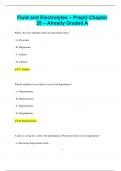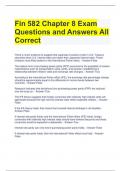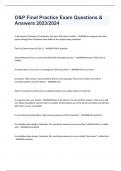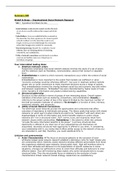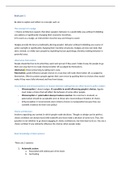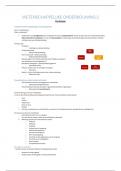Exam (elaborations)
Fluid and Electrolytes – PrepU Chapter 28 – Already Graded A
- Course
- Institution
Fluid and Electrolytes – PrepU Chapter 28 – Already Graded A What is the most abundant cation in extracellular fluid? - A. Potassium - B. Magnesium - C. Sodium - D. Calcium C. Sodium Which condition is most likely to occur with dehydration? - A. Hyponatremia - B. Hypernatremi...
[Show more]
